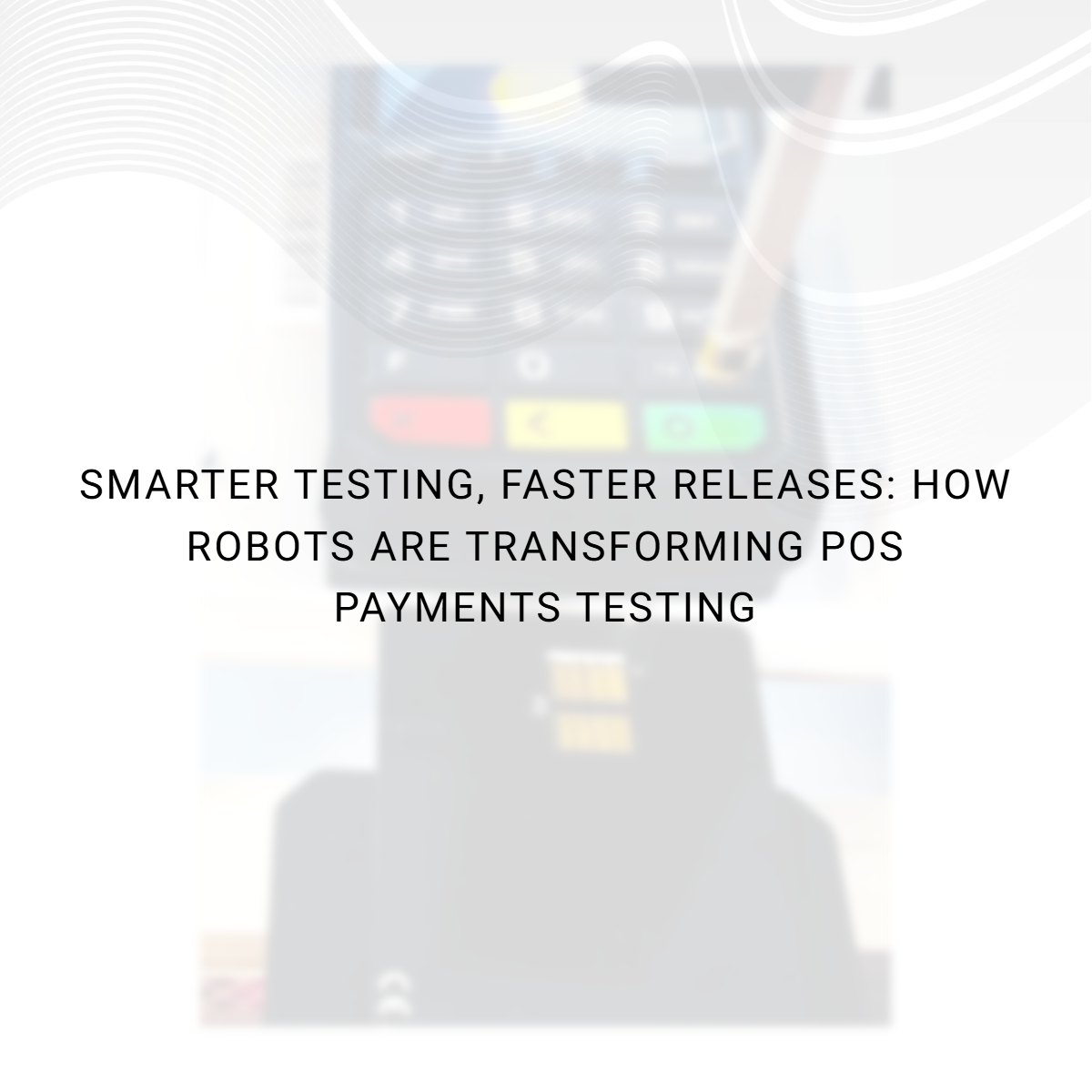Smarter Testing, Faster Releases: How Robots Are Transforming POS Payments Testing
Sat Nov 22 2025

Smarter Testing, Faster Releases: How Robots Are Transforming POS Payments Testing

In POS payment testing, every manual transaction can become a bottleneck for manual QA teams. Managing dozens of test cards across multiple POS terminals, running card tests manually, tracking progress, and capturing screenshots all adds up to long hours, endless test cycles, and an ever-growing list of test cases. For many, this repetitive work is part of every sprint release.
I have experienced this on many projects until automation transformed the testing process in a recent one. Today, a robot handles those same POS transactions with flawless precision, while the team sleeps. What once took days can now be completed overnight, freeing testers to focus on intelligent testing rather than repetition. To understand how this transformation works, let’s look at the key layers that make up a robotic POS testing architecture.
The Architecture of POS Payment Testing Automation
1. Software UI Automation (Eggplant or Similar Tools)
Software automation tools such as Eggplant can automate the user interface of a POS application using model based or image-based testing. The automation drives the checkout flow, find an item, selects payment types, and triggers payment requests to the terminal. When a payment step begins, control passes seamlessly from the software automation to the hardware robotic automation system.
2. Hardware and Robotic Automation (PaytestLab or Similar Platforms)
This is where the physical precision of robotics brings automation to life. A robotic arm, programmed through APIs, mimics the exact movements of a human tester. Each terminal is securely mounted and precisely aligned to ensure consistency across repeated transactions.
Here’s how it works for an insert card transaction:
- The robotic arm picks up a test card using a custom gripper designed to handle various card thicknesses and textures.
- It inserts the card chip-first into the terminal slot with controlled pressure and alignment.
- When prompted, it enters a PIN using precise finger-like actuators.
- After processing, it removes the card and places it back in its holder.
It can also swipe magnetic stripe cards or tap contactless cards for NFC-based payments.
The robot can move the same way every time, with precision down to a single millimetre. Human testers naturally have tiny variations in how they perform actions like swiping a card slightly differently or tapping at a slightly different spot. The robot removes those small variations, making the tests consistent and reliable. Camera can capture terminal screens for verification. This enables fully autonomous, repeatable, and verifiable payment testing, a breakthrough that combines mechanical precision with digital intelligence.
3. Integration and Verification
After the robotic arm completes its actions, control returns to the software automation framework, which verifies:
- On-screen transaction confirmation
- Transaction updates in payment gateways such as Freedom Pay
- Receipt validation and backend reconciliation
This full loop of automation validates both the digital and physical aspects of a transaction, ensuring end to end accuracy.
4. Return Scenarios
The same architecture also supports reverse workflows, such as processing item returns. The automation script can select a product, initiate the return, process it on the terminal, and verify all corresponding updates in the backend systems.
5. Test Execution Through Server
Once the POS automation scripts are created and configured, the DAI Server (or similar) acts as the central command centre to trigger, monitor, and manage these automated test runs across multiple terminals.
Test executions are scheduled and executed sequentially or in parallel, depending on the configuration. Each execution is logged in real time, allowing teams to track outcomes instantly. Results are consolidated in dashboards for quick analysis, highlighting failures, transaction mismatches, or device-specific issues.
Key Benefits of Robotic POS Automation
- Precision and consistency: Robotic arms perform identical actions across terminals with zero drift.
- Eliminates manual effort: No need for testers to handle cards physically.
- Faster execution: Tests that once took days can now run overnight.
- Wider test coverage: Supports multiple POS terminals and card types.
- End-to-end accuracy: Validates both physical and digital transaction flows and integration with payment gateways.
By combining POS testing automation with robotic precision, organizations gain higher quality, faster feedback, and stronger confidence in every software release, while QA teams finally move beyond repetitive clicks to focus on value driven testing.

